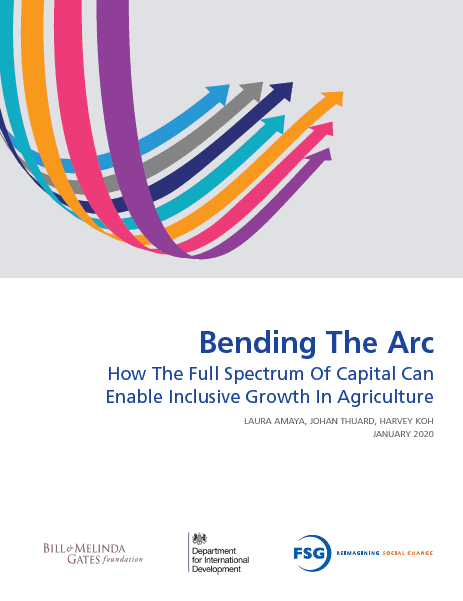While the world has made huge economic gains over the past 50 years, this progress has been highly uneven. This is particularly acute in the agriculture sector, with many of the 500 million smallholder farmers around the world living on meager incomes and facing high levels of economic insecurity.
Despite some recent innovations and advances in including smallholders as market players, there have been few cases where truly widespread, market-level, transformative change towards inclusion has been achieved.
In this report, we explore the role of different kinds of capital in bending the arc of agricultural market development towards inclusive growth. We pay particular attention to how impact-focused players deploying capital that is flexible in terms of risk-return expectations can best deploy it in order to catalyze large-scale transformations towards inclusion.
Top Takeaways
- In order to achieve large-scale transformation, we need to bend the arc of commercial capital towards inclusive models. Achieving this involves understanding the requirements of mainstream investors and lenders, and enabling enterprises to meet them. In the longer term, we could also foster the development of local financial ecosystems that are more strongly oriented towards inclusive business models and practices.
- Subcommercial and grant capital are uniquely positioned to deepen inclusion. This could happen by developing new models and practices, or by expanding the participation of previously excluded groups. A more radical approach involves changing ownership structures in a market to shift the power dynamics in favor of players who have been historically disadvantaged.
- Beyond betting on the scaling of individual enterprises, large-scale transformations rely on guiding and shifting entire markets towards greater inclusion. This requires comprehensive investment strategies that go beyond traditional financial instruments, and innovate to develop new vehicles and platforms to support inclusive growth.


